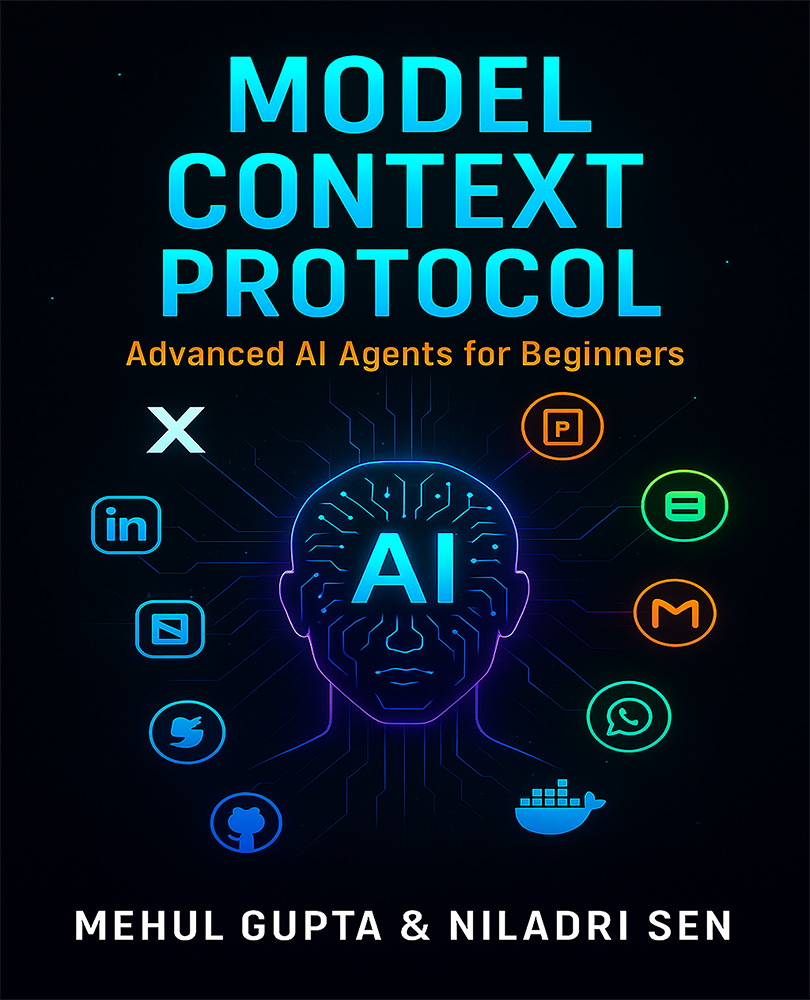Built by Facebook engineers and researchers, Pytorch is an open-source Python-based deep learning framework for developing new machine learning models, explore neural network architecture and deploy them at scale in production.
PyTorch is known for its advanced indexing and functions, imperative style, integration support, and API simplicity. This is one of the key reasons why developers prefer this framework for research and hackability. PyTorch is also the second-fastest-growing open source project on the GitHub community which includes anybody from developers starting to get acquainted with AI to some of the best known AI researchers and some of the best-known companies doing AI.
At its F8 annual developer conference, Facebook shared how production-ready PyTorch 1.0 is being adopted by the community and the industry.
If you want to learn how you can use this framework to build projects in machine intelligence and deep learning, you may go through our book PyTorch Deep Learning Hands-On by authors Sherin Thomas and Sudhanshu Passi. This book demonstrates numerous examples and dynamic AI applications and demonstrates the simplicity and efficiency of PyTorch.
A number of companies are using PyTorch for research and for production. At F8 developer conference this year, Jerome Pesenti, Vice President of AI at Facebook introduced representatives from Microsoft, Airbnb, Genentech, and Toyota Research Institute who talked about how the framework is helping them build, train, and deploy production-ready AI. Below are some excerpts from their talks.
Read also: How PyTorch is bridging the gap between research and production at Facebook: PyTorch team at F8 conference
How Microsoft uses PyTorch for its language modeling service
David Aronchick, Head of Open Source Machine Learning Strategy at Microsoft Azure
At Microsoft, PyTorch is being used in their language modeling service. Language modeling service uses state-of-the-art language models for both 1 P (first-party) and 3 P (third party). Microsoft explored a number of deep learning frameworks but was running into several issues. These included a slow transition from research to production, inconsistent and frequently changing APIs, and a trade-off between high-level ease-of-use and low-level flexibility.
To overcome these issues, in partnership with Facebook Microsoft built an internal language modeling toolkit on top of PyTorch. Using the native extensibility that PyTorch provided, Microsoft was able to build advanced/custom tasks and architecture. It also improved the onboarding of new users and was an active and inviting community. As a result of this work, Microsoft was able to scale the language modeling features to billions of words. It also led to intuitive, static, and consistent APIs which resulted in seamless migration from Language modeling toolkit v0.4 to 1.0. They also saw improvements in model sizes.
Microsoft have partnered with ics.ai to deliver conversational AI bots across the public sector in the UK. ICS.ai, based in Basingstoke, have trained their Microsoft AI driven chat bots to scale to the demands of large county councils, healthcare trusts and universities.
How Airbnb is using conversational AI tools in PyTorch to enhance customer experience
Cindy Chen, Senior machine learning Data Scientist at Airbnb
Airbnb has built a dialog assistant to integrate smart replies and enhance their customer experience. The core of their Dialog assistant for customer service at Airbnb is powered by PyTorch. They have built the smart replies recommendation model by treating it as a machine translation problem.
Airbnb is translating the customer's input message into agent responses by building a sequence to sequence model. They leverage PyTorch’s Open neural machine translation library to build the sequence to sequence model.
Using Pytorch has significantly sped up the Airbnb’s model development cycle as PyTorch provides them with state-of-the-art technologies such as various attention mechanisms and beam search.
How Genentech uses Pytorch in drug discovery and cancer therapy
Daniel Bozinov, Head of AI - Early clinical development informatics, Genentech
At Genentech, PyTorch is being used to develop personalized cancer medicine as well as for drug discovery and in cancer therapy.
For drug development, Genentech has built deep learning models for specific domains to make some predictions about the properties of molecules such as toxicity. They're also applying AI to come up with new cancer therapies. They identify unique molecules specific to cancer cells that are only produced by those cancer cells, potentially sensitizing the immune system to attack those cancer cells and basically treat them like an infection.
PyTorch has been their deep learning framework of choice because of features such as easier debugging, more flexible control structures, being natively pythonic, and it’s Dynamic graphs which yield in faster execution. Their model architecture is inspired by textual entailment in natural language processing. They use a partially recurrent neural network as well as a straightforward feed-forward network, combine the outputs of these two networks and predict the peptide binding.
Unlock access to the largest independent learning library in Tech for FREE!
Get unlimited access to 7500+ expert-authored eBooks and video courses covering every tech area you can think of.
Renews at $19.99/month. Cancel anytime
Toyota Research Institute adds new driver support features in cars
Adrien Gaidon, Machine Learning Lead, Toyota Research Institute
Toyota developed a cutting-edge cloud platform for distributed deep learning on high-resolution sensory inputs, especially video. This was designed to add new driver support features to the cars.
PyTorch was instrumental in scaling up Toyota’s deep learning system because of features like simple API, integration with the global Python ecosystem, and overall a great user experience for fast exploration. It’s also fast for training on a very large scale. In addition to amping up TRI’s creativity and expertise, Pytorch has also amplified Toyota’s capabilities to iterate quickly from idea to real-world use cases. The team at TRI is excited for new Pytorch production features that will help them accelerate Toyota even further.
In this post, we have only summarized the talks. At F8, these researchers spoke in length about each of their company’s projects and how PyTorch has been instrumental in their growth. You can watch the full video on YouTube.
If you are inspired to build your PyTorch-based deep learning and machine learning models, we recommend you to go through our book PyTorch Deep Learning Hands-On.
Facebook releases PyTorch 1.3 with named tensors, PyTorch Mobile, 8-bit model quantization, and more
François Chollet, creator of Keras on TensorFlow 2.0 and Keras integration, tricky design decisions in Deep Learning, and more
PyTorch announces the availability of PyTorch Hub for improving machine learning research reproducibility
 United States
United States
 Great Britain
Great Britain
 India
India
 Germany
Germany
 France
France
 Canada
Canada
 Russia
Russia
 Spain
Spain
 Brazil
Brazil
 Australia
Australia
 Singapore
Singapore
 Canary Islands
Canary Islands
 Hungary
Hungary
 Ukraine
Ukraine
 Luxembourg
Luxembourg
 Estonia
Estonia
 Lithuania
Lithuania
 South Korea
South Korea
 Turkey
Turkey
 Switzerland
Switzerland
 Colombia
Colombia
 Taiwan
Taiwan
 Chile
Chile
 Norway
Norway
 Ecuador
Ecuador
 Indonesia
Indonesia
 New Zealand
New Zealand
 Cyprus
Cyprus
 Denmark
Denmark
 Finland
Finland
 Poland
Poland
 Malta
Malta
 Czechia
Czechia
 Austria
Austria
 Sweden
Sweden
 Italy
Italy
 Egypt
Egypt
 Belgium
Belgium
 Portugal
Portugal
 Slovenia
Slovenia
 Ireland
Ireland
 Romania
Romania
 Greece
Greece
 Argentina
Argentina
 Netherlands
Netherlands
 Bulgaria
Bulgaria
 Latvia
Latvia
 South Africa
South Africa
 Malaysia
Malaysia
 Japan
Japan
 Slovakia
Slovakia
 Philippines
Philippines
 Mexico
Mexico
 Thailand
Thailand














